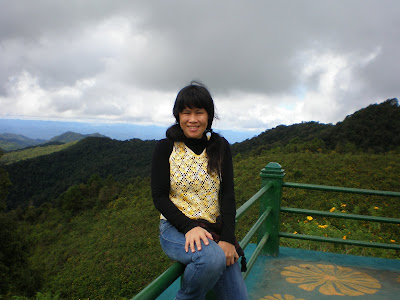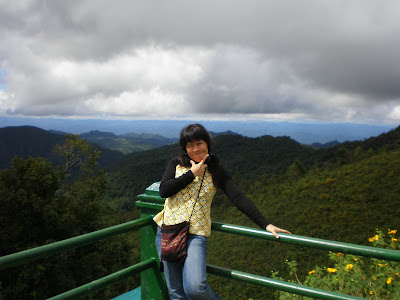Its hard to argue that any place you can fly to is remote or isolated, but as your small (72 seats) plane threads its way through the mountains and onto the equally small runway practically in the center of town, you get the definite feeling that you're well off the beaten path.
The attraction to Mae Hong Son, as opposed to more mainstream destinations such as Chiang Rai, is it's small-town atmosphere and architecture heavily influenced by neighboring Burma. With many people looking for more 'adventure' in their vacations, Mae Hong Son's wild rivers are also a big attraction.
History
Phaya Singhanat Racha, first governor of Mae Hong Son
The exact origins of the city are not known. In fact, archaeological digs in a cave north of town suggests that the area has been occupied by humans for thousands of years. What is known is that by the mid 19th century Mae Hong Son was still a small village, but well-known for its teak and wild elephants that could be captured and used in war.
In 1855, a man named Chan Ka Lay emigrated from the Shan state in Burma to the village of Pang Moo, north of Mae Hong Son. In 1866 he moved to Mae Hong Son and eventually became village headman. His rise was no doubt helped along by a couple of strategic marriages to the daughters of powerful men. In 1872, the King of Chiang Mai (King Indhawijaonon), hearing of this capable man, called Chan Ka Lay to Chiang Mai.
In 1874, the King of Chiang Mai saw the strategic importance of Mae Hong Son and upgraded the village of Mae Hong Son to a city. Chan Ka Lay was appointed as the city's first govenor, and awarded the title and name 'Phaya Singhanat Racha'.
Most of the old temples and other buildings that you see in Mae Hong Son today date from the time just after the elevation of the village to a city.
The most interesting things to see in Mae Hong Son town are its many Shan style temples. These are quite distinct architecturally from other temples in Thailand.
The most noticeable difference are the large wooden wiharns (prayer halls). In Mae Hong Son, these are usually open-fronted and the roofs will be trimmed with lace-like fretwork in silver, white or gold.
The ubosots (ordination halls) are usually the only buildings in stone in Mae Hong Son temples. They are also generally very small compared to temples in central Thailand.
They seem to be a fixture of every package tour or day trip. We generally try to avoid tours that include stops at hill tribe villages. The idea of visiting people just to gawk at their 'strangeness' seems rude, to say the least.
Among the most 'popular' of the hill tribes are the Padaung, commonly referred to as the tribe of 'longnecked' women. Several villages of these people, part of the Karen refugees from Burma, are found in Northern Thailand, especially around Mae Hong Son.
A very happy granny from the 'long-earred' tribe.
The women of the Padaung tribe wear brass coils around their neck. Contrary to what was once believed, the coils do not stretch out the neck, but rather they push the shoulders and rib cage downward. Girls will start wearing small coils around the age of six, and the size is increased as they grow older. The coils on adults typically weigh about five kilograms (11 pounds).
The ethics of whether or not to visit these people is up to you. On the one hand, tourism is one of the few ways that these people can earn a living. As refugees, they are not allowed to seek regular work in Thailand. Most of the women we have met seem to be proud of their heritage and feel no embarrassment about showing it off for the tourists.
On the other hand, tourism may be helping to perpetuate a form of female mutilation that would otherwise be dying out. Young girls may be pressured into performing the ritual just to earn money for the family.
About 17 kilometers (10 miles) from Mae Hong Son town is the small Fish Cave (tam plaa in Thai) national park. The name is a bit misleading. There's no cave that you can really go into. The park surrounds a place where a small stream emerges from the rock face of a hill.
However, there are definitely fish. Big brook carp of a kind found only in a very few places in Thailand. The fish grow up to a meter (three feet) long and appear deep blue in color. The fish seem to like to cool water of the cave, and you can see them 'queuing up' to get in. There's another small opening a few steps up that allows you to look down into the cavern, which appears to be filled with the fish.
The park is a cool shady place with forests of trees lining the cool stream flowing out of the hill. Beyond the stream, near the park entrance, is a large open space suitable for pitching a tent. There are also a number of food stalls and restaurants around the entrance.
While the Fish Cave itself is not a really spectacular sight, the cool environment and ample amenities make it a very pleasant spot to plan a lazy afternoon.






























ไม่มีความคิดเห็น:
แสดงความคิดเห็น